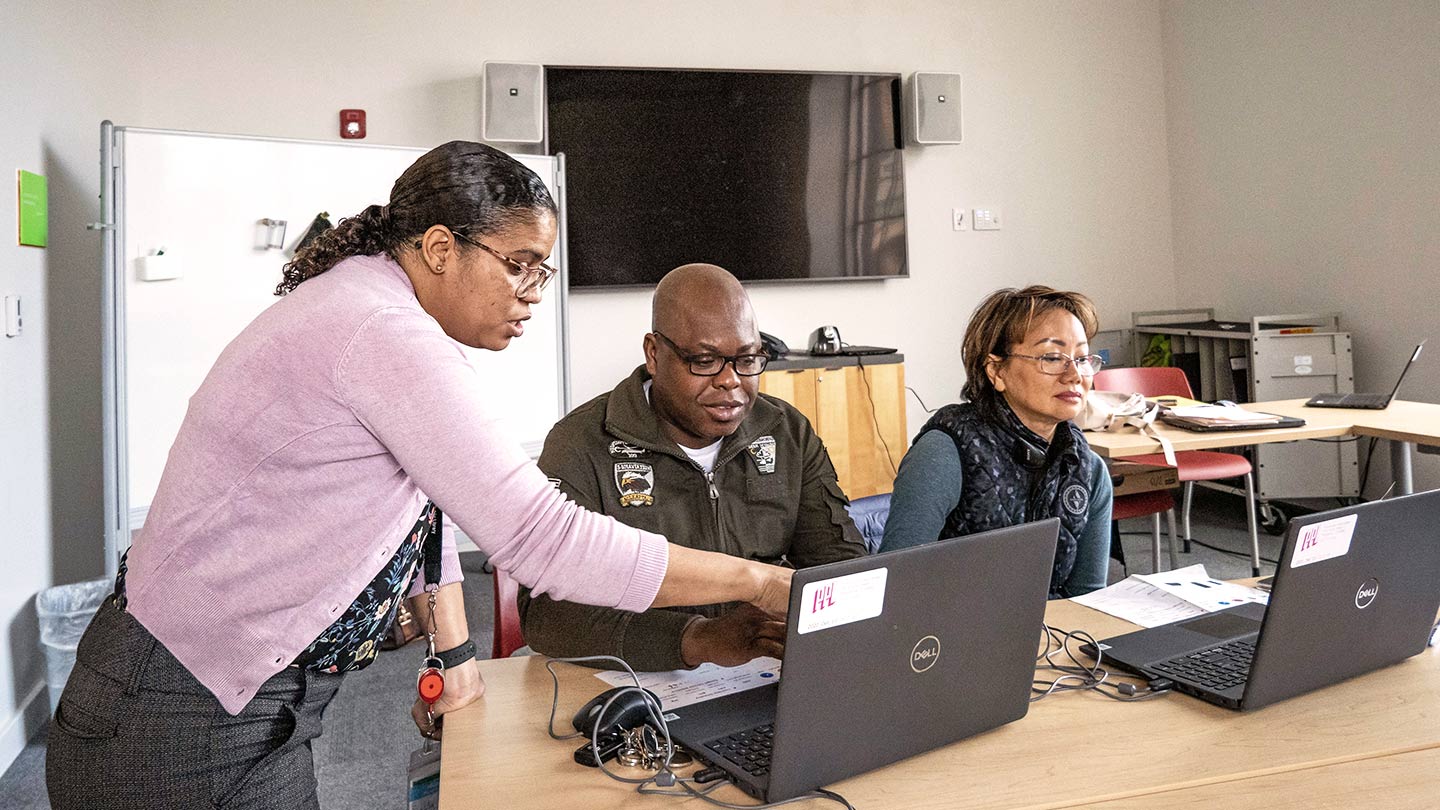
6 min read
Gain efficiencies
Hide
Gain efficiencies
Hide
Whether you’re choosing a treasury management system, optimizing accounts receivable, or integrating your enterprise resource planning and banking systems, choosing the right technology provider can make or break success.
Learn more about how to choose the right technology provider for your commercial real estate organization.
Determine your goals and how to achieve them
Before deciding on a technology provider, you need to clearly define the problem and goals and determine how to measure success.
- Understand your client: Every great product organization starts with its customer and works backward. Real estate is no different. First, define your customer. Are they an internal team, a resident of your property, or a retail occupant? Then, you can dive deep into their experiences. Use qualitative methods, such as interviews and focus groups, and quantitative ones, such as surveys and user testing, to learn about your client’s needs, preferences and pain points.
- Define the objective: With a firm grasp on the client’s needs, you can properly define your objective. What problem are you trying to solve with commercial real estate technology? For instance, you may want to gain reporting insights, increase operational efficiencies or improve communication across your real estate organization.
- Maintain your North Star: Defining your objective can help you establish your company’s guiding value to ensure you’re aligned to the right technology partner. As you develop, build and implement technology solutions, unforeseen issues are likely to occur, but your North Star, your objective, shouldn’t change.
- Develop metrics: It’s important to define key metrics upfront to properly evaluate the technology solution’s effectiveness. Establish clear benchmarks and key performance indicators to measure whether the product is delivering against client needs. If your objective is to establish a loyalty program for residents across your properties, for example, you should look at engagement behaviors, retention rate, lifetime value, turnover and referral rates.
- Regularly evaluate your progress: Assess metrics throughout the implementation process to ensure the solution is achieving the desired outcomes. In the case of the loyalty program, for example, your analysis may show guests are abandoning the program during onboarding. Your objective is to still create the best loyalty program, but a key metric could be that 95% of guests that begin the onboarding process complete it. Create metrics that measure the success of each step of the experience, not only the end result. This will produce a deeper, more nuanced understanding of the client and solution.
What to look for in a real estate tech solution
While the relationship with your tech provider is paramount, you should also evaluate the tech solution, considering:
- Budget and ROI: Does the product’s cost align with your budget? From there, you’ll want to evaluate the solution’s expected return on investment, including efficiency gains and revenue growth.
- Flexibility and scalability: Does the product allow for integrations and customizable features as your business evolves? The best vendors offer modular solutions that can adapt to new markets, services and portfolio expansions.
Evaluate technology providers
Focus on your North Star when selecting a technology vendor. To ensure a successful relationship, your tech provider should:
-
Align with your business goals: The real estate technology space is still in a nascent stage. You want a provider that not only understands your current needs but is eager to invest in and collaborate on your future. When you’re both aligned on how technology ties into your business, vision and long-term goals, you can develop a collaborative relationship. Your vendor can not only offer more strategic tools tailored to your goals, but also help their technology evolve with your company’s needs.
-
Demonstrate expertise: You want to work with a tech vendor that can provide specialized support for commercial real estate’s complex structures and workflows. For example, real estate owners and operators often have one or more legal business entities and corresponding operating accounts for each property—larger firms often handle hundreds, sometimes thousands, of accounts. A provider with a track record in real estate can help you navigate these complexities and address industry-specific pain points. Ask prospective providers for case studies and details of past implementations with real estate organizations to confirm their expertise.
-
Provide ongoing support: It’s not enough to implement a technology solution. You need help to keep the system functional and up to date, with regular troubleshooting, updates and communication. Make sure to evaluate the vendor’s responsiveness, quality of communications and dedication throughout the entire product lifecycle, from discovery to ongoing support. A dedicated account manager or support team, proactive check-ins and consistent training can help you maximize the solution’s value.
-
Data security and compliance: Given the sensitive data in real estate—such as financial details and personal client information—data security and regulatory compliance should be a top priority. Make sure the provider has encryption, monitoring and disaster recovery plans in place, and confirm they have experience maintaining compliance with industry standards. This not only protects your company legally but also maintains the trust of your clients. Look for independently audited measures of continuity and protection, such as SOC 2.
Balance innovation and reliability
The best technology providers deliver both innovation and reliability.
Innovation creates opportunities for growth and can give your business a competitive edge. The best providers invest in research and development to stay at the forefront of technology. When your vendor is dedicated to technology advancements, you’re less likely to outgrow the provider’s solution, and you can continue to innovate and grow without undergoing costly overhauls.
Reliability is equally important for commercial real estate—particularly multifamily—because revenue is concentrated in rent payments.
JPMorganChase for example, aims to offer the safety, scale and resiliency of a global bank with the agility and innovation of a fintech. The firm spends $17 billion on technology annually—an investment backed by our fortress balance sheet and secure payment rails—to operate with speed and precision at scale.
Tackle technology challenges across your business
While adding new technology can be a complicated, involved process, some hurdles to adoption may come from within your organization, including:
Technical challenges
Many real estate firms operate on outdated legacy systems, often referred to as technical debt. These companies must decide whether to upgrade their systems onto a platform and add more solutions or implement individual, full-stack solutions that solve specific client needs. This decision depends on many factors, including the existing infrastructure’s flexibility and a cost-benefit analysis of upgrading versus adding individual solutions.
Once your real estate company addresses its current tech debt, it can enable investment in future innovation and capabilities. Creating a roadmap to understand what technology you need now and what your systems may need to support in the future can help.
Cultural challenges
Cultural challenges with internal users and stakeholders can be harder to identify and quantify. Whether it’s because they’re concerned about job security or uncomfortable with new technology, employees may be resistant to change. When choosing a technology vendor, look for a team that’s understanding and empathetic and has a thorough employee training plan. For any tech solution to be successful, you need to address your employees’ concerns early on to gain their support, and regularly reach out for feedback.
Implement and scale your tech solution
When implementing your tech-enabled product, start small. After completing a pilot project, you can iterate and refine the technology before rolling it out across the organization.
Remember: Technology implementations are rarely perfect from the outset. Continuous feedback and iteration from internal teams and external users will help ensure the solution is effectively scaling. Be prepared to refine and adjust the solution based on performance data.
JPMorgan Chase Bank, N.A. Member FDIC. Visit jpmorgan.com/cb-disclaimer for disclosures and disclaimers related to this content.







